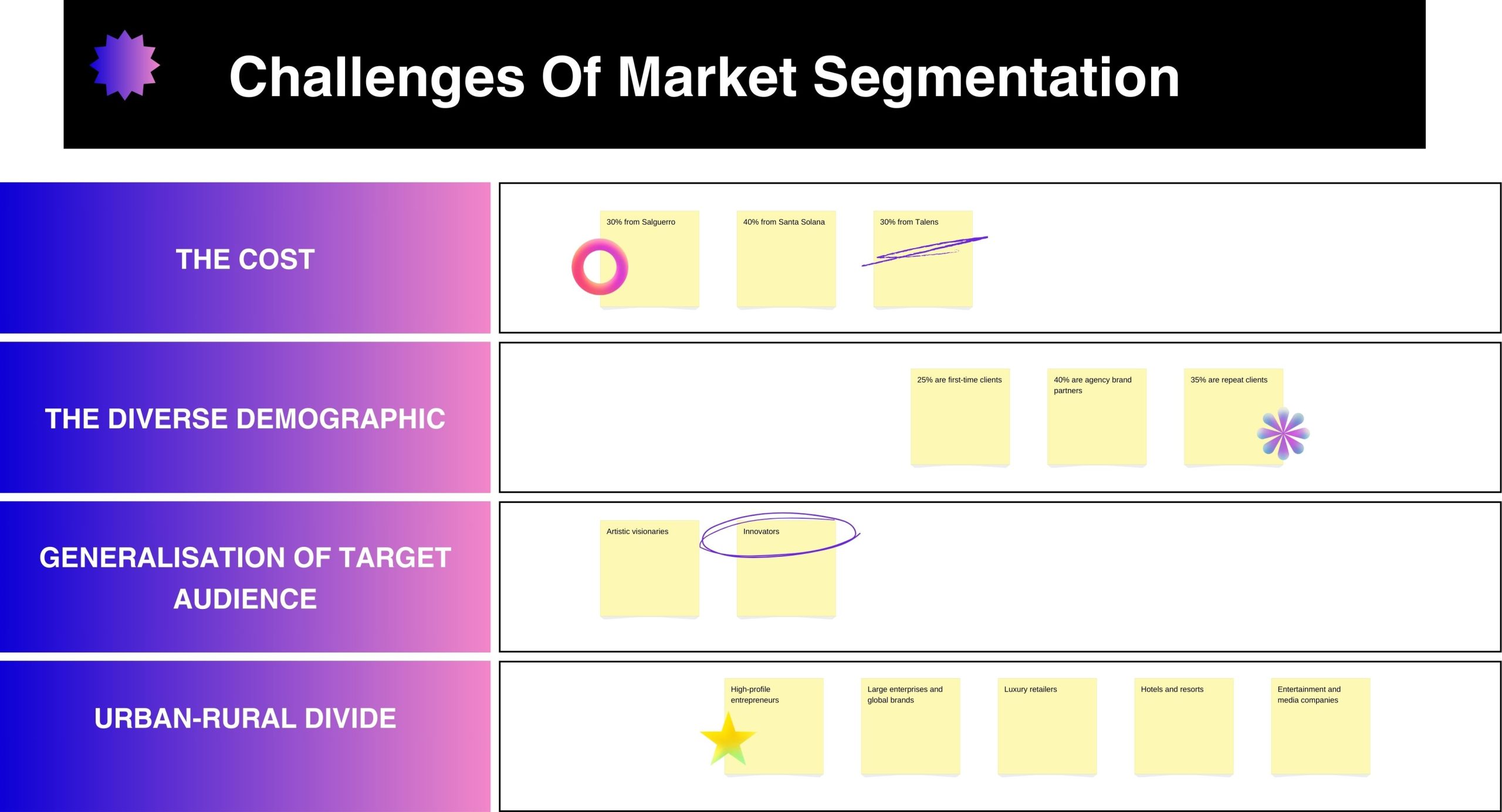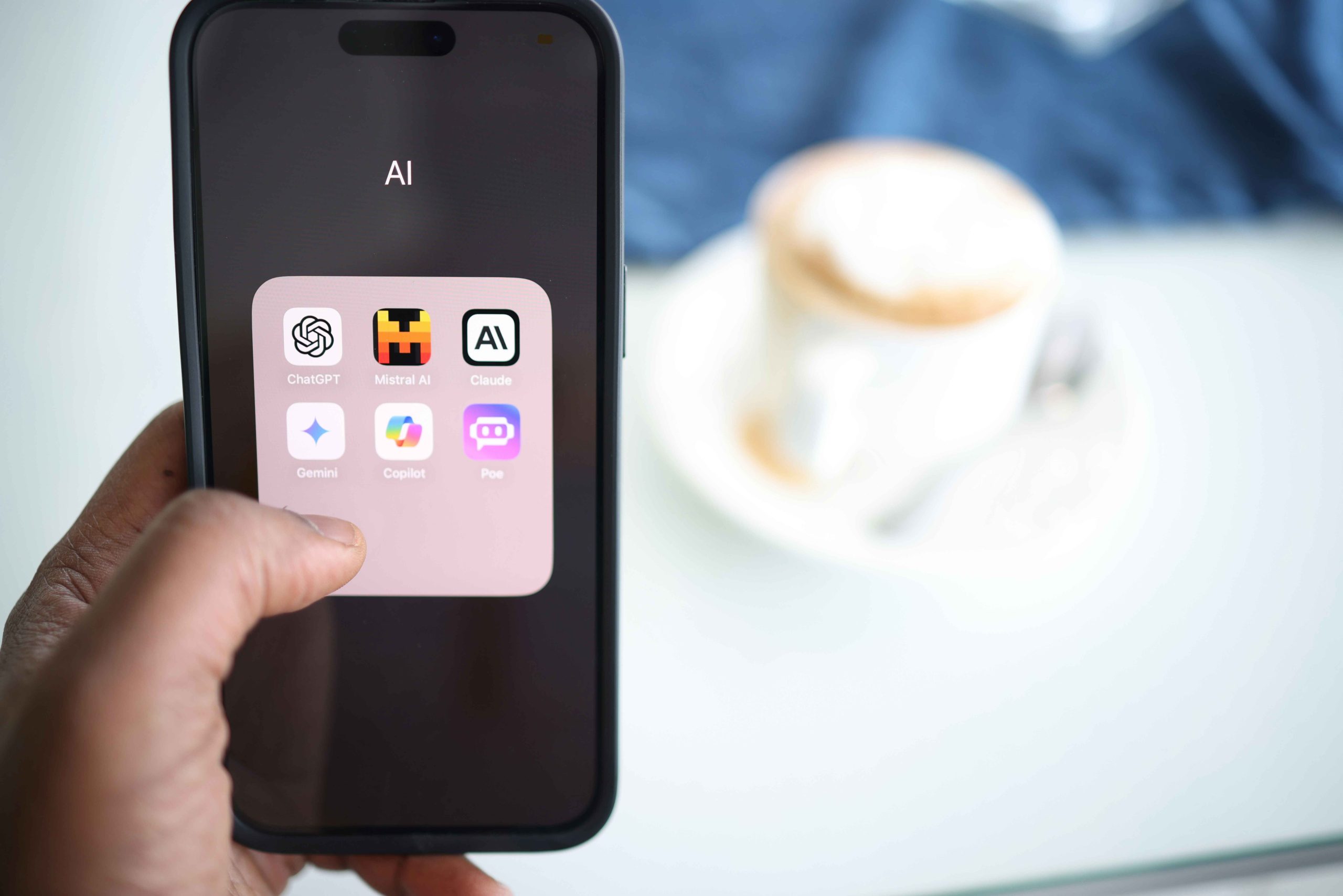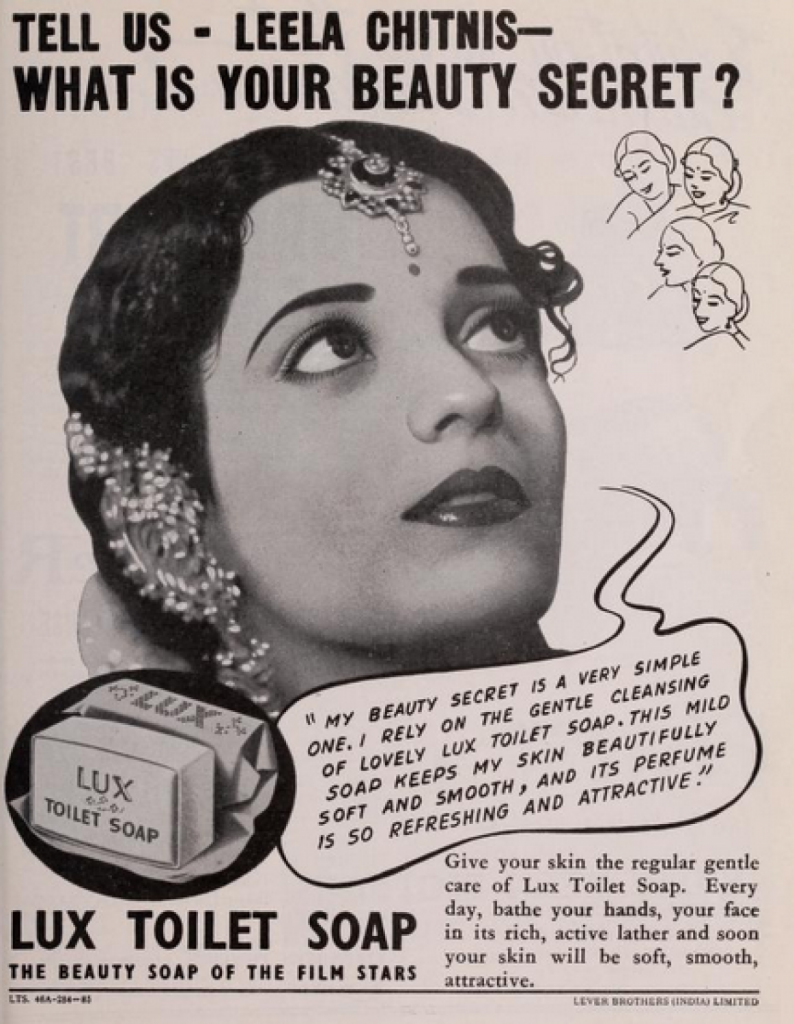 Celebrity endorsements have been prevailing in India for a very long time. It is not a new idea, in marketing. Back in 1941, Leela Chitnis was the first Indian actress to endorse the soap brand, Lux but the real growth of celebrity endorsements in India happened in the late 80s when a number of stars like Tabassum (Prestige Pressure Cooker), Jalal Agha (Pan Parag) and Kapil Dev (Palmolive Shaving Cream) started endorsing brands. As per GroupM’s Showbiz marketing report 2017, the celebrity endorsers’ market in India has grown steadily from 665 celebrity engagements in 2007 to a total of 1660 in 2017. In the age of digital disruption, there is an increasing challenge for brands to capture people’s time and focus and according to the report, marketers believe that brand ambassadors provide a higher degree of consumer recall. This is based on a pretty simple logic. India is a country where people are star-struck by film stars, cricketers, politicians. People idolise them and so, when they are seen in an advertisement promoting a product, it grabs all the eyeballs. Today we have the likes of Shah Rukh Khan, Amitabh Bachchan, Deepika Padukone and Virat Kohli endorsing brands and the majority of India’s population is familiar with most of the mainstream celebrities. Finding a way to communicate and engage with the audience is the backbone of any brand’s strategy and celebrities become the voice of that communication. However, it is no longer just about film stars. While movie celebrities still seem to bag the largest number of deals, social media stars and sports personalities are also cutting into the celebrity endorsements pie.
Celebrity endorsements have been prevailing in India for a very long time. It is not a new idea, in marketing. Back in 1941, Leela Chitnis was the first Indian actress to endorse the soap brand, Lux but the real growth of celebrity endorsements in India happened in the late 80s when a number of stars like Tabassum (Prestige Pressure Cooker), Jalal Agha (Pan Parag) and Kapil Dev (Palmolive Shaving Cream) started endorsing brands. As per GroupM’s Showbiz marketing report 2017, the celebrity endorsers’ market in India has grown steadily from 665 celebrity engagements in 2007 to a total of 1660 in 2017. In the age of digital disruption, there is an increasing challenge for brands to capture people’s time and focus and according to the report, marketers believe that brand ambassadors provide a higher degree of consumer recall. This is based on a pretty simple logic. India is a country where people are star-struck by film stars, cricketers, politicians. People idolise them and so, when they are seen in an advertisement promoting a product, it grabs all the eyeballs. Today we have the likes of Shah Rukh Khan, Amitabh Bachchan, Deepika Padukone and Virat Kohli endorsing brands and the majority of India’s population is familiar with most of the mainstream celebrities. Finding a way to communicate and engage with the audience is the backbone of any brand’s strategy and celebrities become the voice of that communication. However, it is no longer just about film stars. While movie celebrities still seem to bag the largest number of deals, social media stars and sports personalities are also cutting into the celebrity endorsements pie.
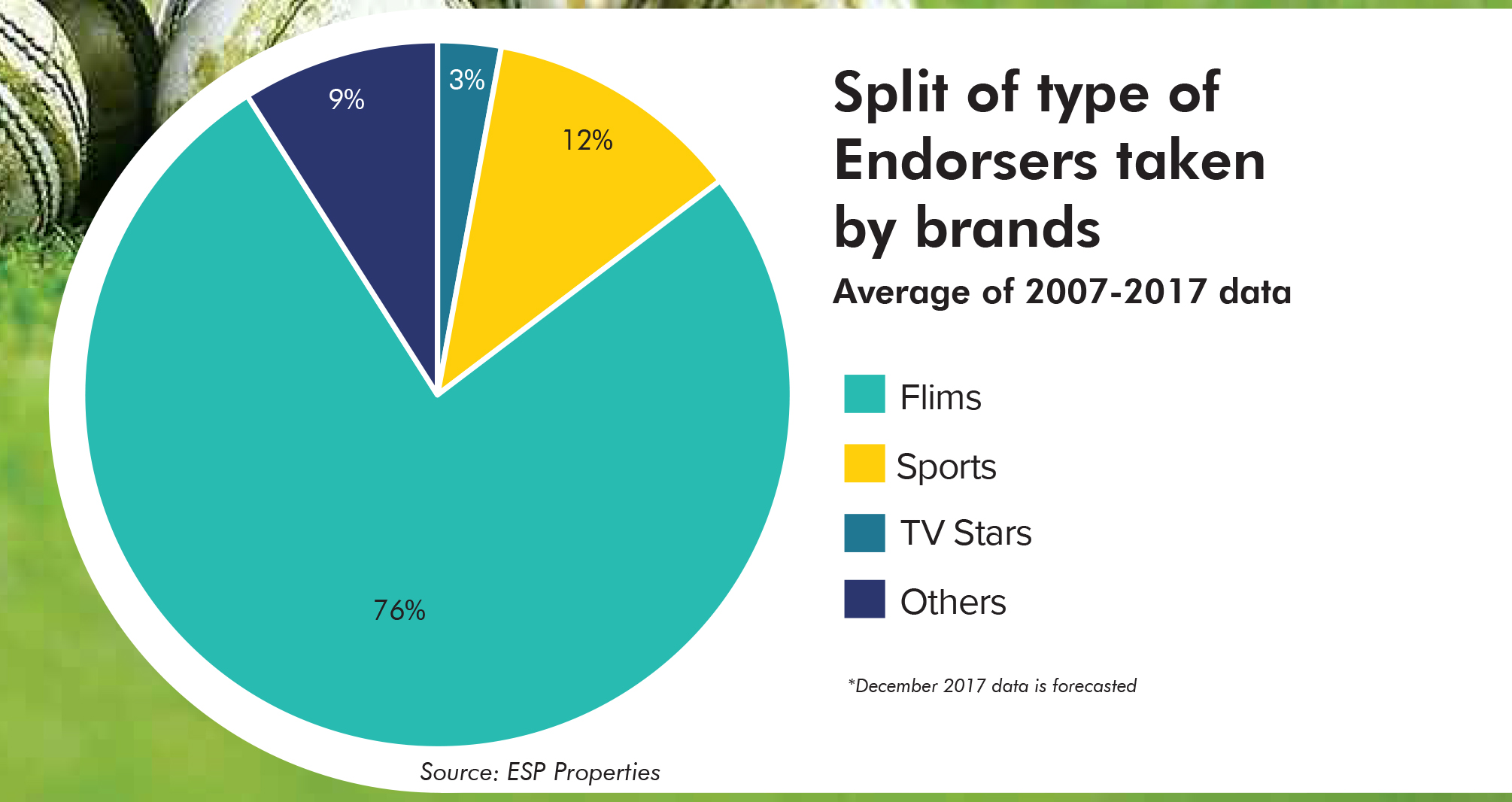
Social media has undeniably changed the game and given rise to the influencer. According to the report, today we have a plethora of self-styled celebrities, who have earned a name for themselves through blogs and other e-platforms like YouTube, Instagram, Twitter and Facebook. They are influencers and brands use them to create a word-of-mouth advertising across categories such as fashion, food, fitness, beauty, music and so on. While in a celebrity endorsement, the celebrity is merely the face of a brand message, in influencer marketing, the influencer is perceived to be the creator of the message. Take the example of Lily Singh (IISuperwomanII) who was signed on by Pantene as the brand ambassador this year. Lily is an online sensation and her hilarious videos have garnered over a billion views collectively. Clearly, she has a large fan base and is capable of generating worthy conversations. Similarly, Indian sportspersons are becoming hugely popular with brands. The report states that over the last 10 years, sports personalities in India have developed a deeper association with brands, services, and companies through investments, product designs and licensed deals. While Indian cricketers have always been big on endorsements, the last decade also witnessed the rise of non-cricket sportspersons such as Vijender Singh, Sakshi Malik, PV Sindhu and Sania Mirza, especially for categories that require fresh faces.
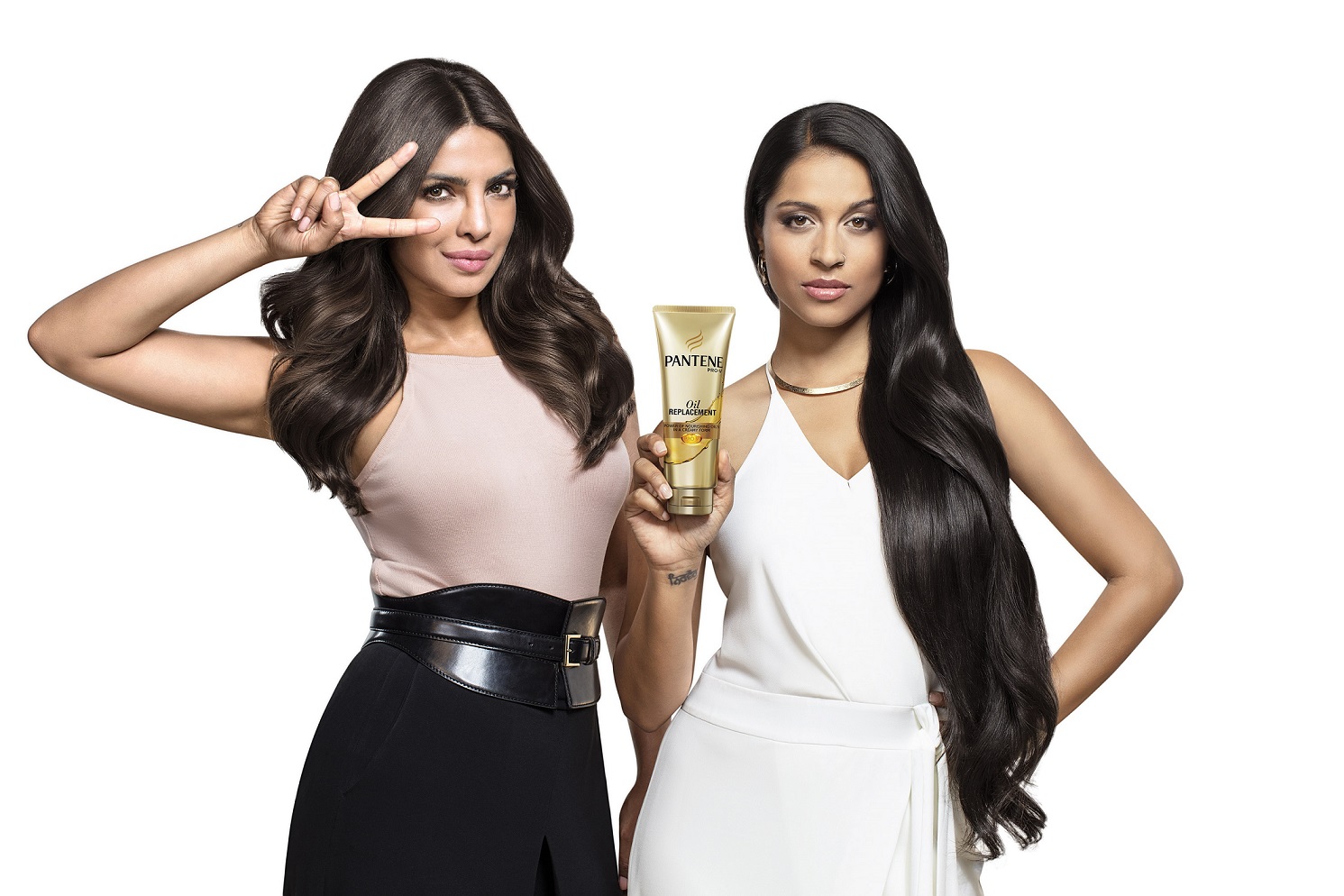
From posting personal pictures to chatting with their film colleagues, Bollywood celebrities have become increasingly gung-ho about social media and thanks to this, brands today have found a whole new way to drive home their message. As per the report, nearly 1 out 10 social media activities by Hindi film celebrities involve promoting a brand. The report states that, from the latter half of 2007 to 2017, brands have started focusing on an online opinion or a YouTube review to add credibility to their brand value. Furthermore, a celebrity’s Twitter following or Facebook fan page strength is a huge pull for brands today. With even the second and third rung actors commanding millions of followers on platforms such as Instagram, advertisers and brand managers recognise the importance of leveraging their online presence to attract more and more consumers.

It is true. Celebrity endorsements can often reap huge rewards for a brand and there are multiple reasons why brands approach celebrities. At the crux of it, the report lists three main motives behind brand endorsements – sustenance, revival and launch.
Sustenance, or the motive of the brand to keep its recall value in your mind, is the biggest reason for using a celebrity influencer. The report highlights that TV advertisements with celebrities provide a better consumer recall. A study by mConsult’s Campaign Watch illustrates that when Voonik, a fashion brand launched their first TVC with popular Indian director and choreographer Farah Khan in 2015, the campaign recall surpassed the category norm in just 3 weeks of the launch. YepMe, one of the pioneers in online fashion space, launched a TVC featuring Shah Rukh Khan, which helped the brand on building saliency and attribution.
Revival is when the popularity of the endorser is used to simply pull the brand out of obscurity. For instance, Aamir Khan was roped in by Godrej in 2013 to enhance the brand’s appeal.
Finally, launch is about making a first impression while riding on the endorser’s known face, such as most phone brands tapping on Hindi films actors.
In a nutshell, a celebrity is now not just the face of brand. He or she is a spokesperson, a social media influencer and an ambassador. With inputs from Atul Kasbekar, Chief Managing Director at Bling! Entertainment, the report dissects a typical endorsement deal and notes that a celebrity is usually signed on by a brand for a term of one to two years with three to four days of TV/print shoots or event appearances. Brands which plan in advance on the utilisation of celebrities for multiple campaigns, usually put down higher number of days in the contract to get a better cost per day from the celebrity. Brands have also begun looking at full-fledged partnerships with celebrities. For instance, Sonam and Rhea Kapoor have collaborated on their clothing line Rheson with Shoppers Stop but will continue to completely own the brand. In the case of All About You by Deepika Padukone, the intellectual property is co-owned by Deepika and Myntra which has a profit-sharing deal structure.
The report also takes a closer look at the categories that prefer endorsers. A study by ESP Properties shows that from 2013 to 2017, personal care brands have been the biggest spenders in this regard. This is closely followed by the apparel category, which often relies on movie stars to promote a range of clothing dedicated to a specific film. Over the past two years, e-commerce has seen an unprecedented growth in use of brand ambassadors. Almost every major e-commerce company has engaged celebrities through multi-crore deals and partnerships. The home appliances category on the other hand has slumped recently. While female celebrities dominate the personal care and consumer durables category, male celebrities rule the automobiles and e-commerce sectors for endorsements.

Speaking of celebrity brand endorsers in India, Shah Rukh Khan appears to be every brand’s favourite star! Topping the celebrity list in terms of endorsements, Shah Rukh Khan has endorsed brands such as Tag Heuer, Hyundai, Reliance Jio, BigBasket etc. In fact according to the report, he was the top most celebrity brand endorser of 2015 and 2016. This year, however, Virat Kohli has overtaken King Khan and bagged the number one spot in brand endorsements. Deepika Padukone also made it to the list of top 3 brand endorsers for the first time this year but it is obvious that the number of female celebrity endorsers in the top 10 list is still far lesser than their male counterparts.
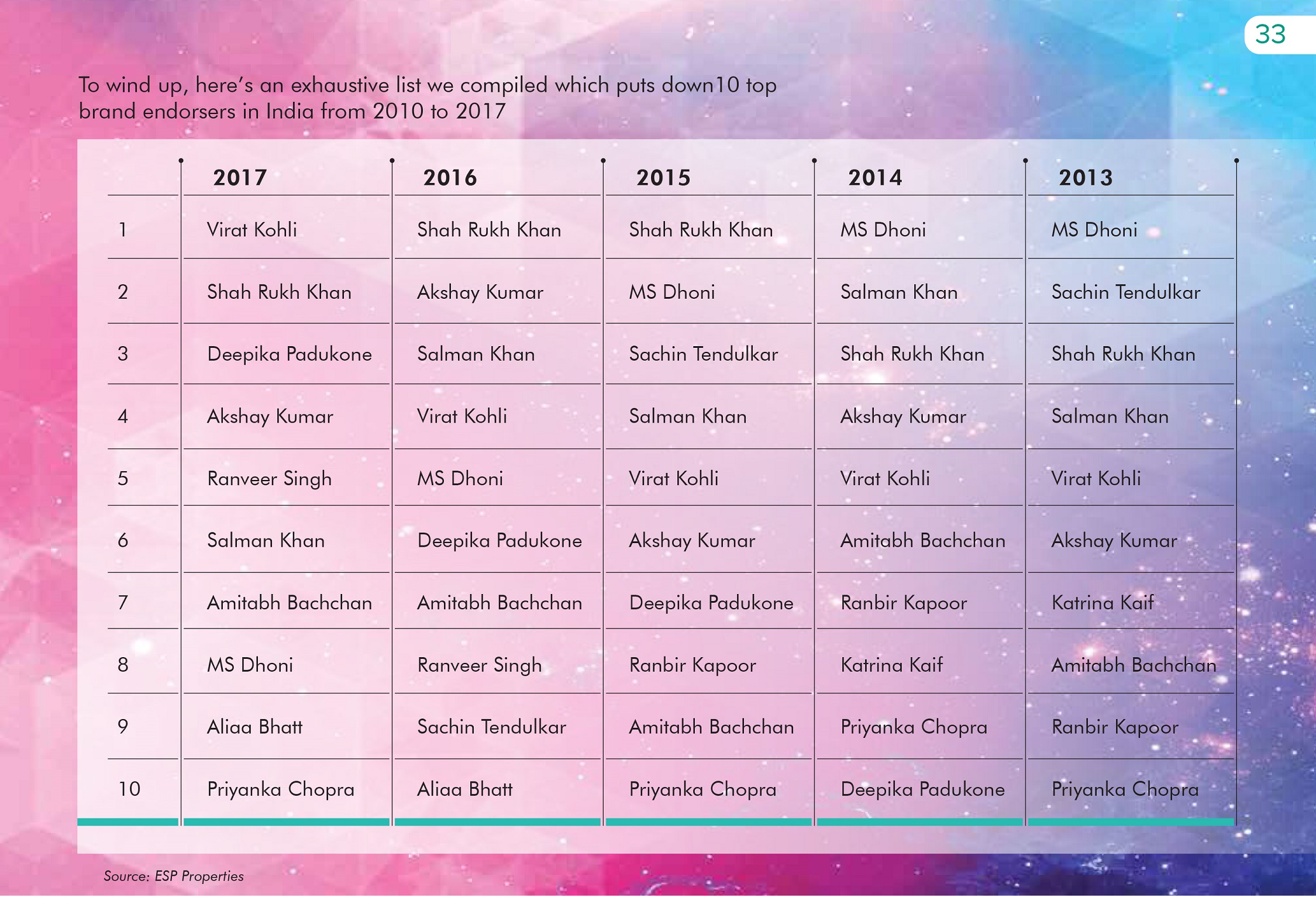
But what does it take to be a top endorser? Can there be a perfect mix of factors that a celebrity requires to become the most desirable brand endorser?
With Virat Kohli and Anushka Sharma tying the knot this month, the celebrity couple is now defined as a “power couple”. Virat and Anushka endorse around 28 brands together, such as Head and Shoulders, Manyavar, Pepsi, Celkon, Boost, Audi, Fastrack, Goinee, Wrogn and Polaroid. Both stars represent a modern and young India and post marriage, the couple is likely to be a favourite in the ad world.

However, any brand will need to consider other factors in their candidates aside from their star power such as the probability of risk and brand fit. The report reveals that the top few influencers of India possess a number of qualities that make them desirable as a brand endorser. These qualities are –
a) Credibility and market perception: knowledge and skills that the celebrity stands for.
b) Attractiveness: likeability, familiarity, similarity of the celeb with the brand.
c) Star Power: the mass appeal which affects the consumers’ buying behaviour
d) Relatability: consumers should relate to the ambassador.
e) Return on Investment: the ‘what’s in it for me’ question for the brand company.
Well, endorsements today are indeed moving from mainstream celebrities to influencers. Going forward, the report predicts a continuous shift in focus from celebrity brand ambassadors to key opinion leaders and given the media fragmentation today, brands may choose between using a single ambassador across all channels or have multiple faces for a campaign. A celebrity’s presence and following on social media is also a major factor for brands to consider when deciding on who to engage with. In fact, social media will continue enabling brands to measure the effectiveness of these celebrity-led campaigns as it gives instant and sometimes, real-time feedback which makes it easier for brands to calculate ROI sooner. The impact of digital marketing in the world of entertainment has been further discussed in GroupM’s showbiz marketing report at length. In the next edition of Melt, we shall unravel how social media has changed the way films are marketed, and production houses, big and small, have their sleeves rolled up for this.

